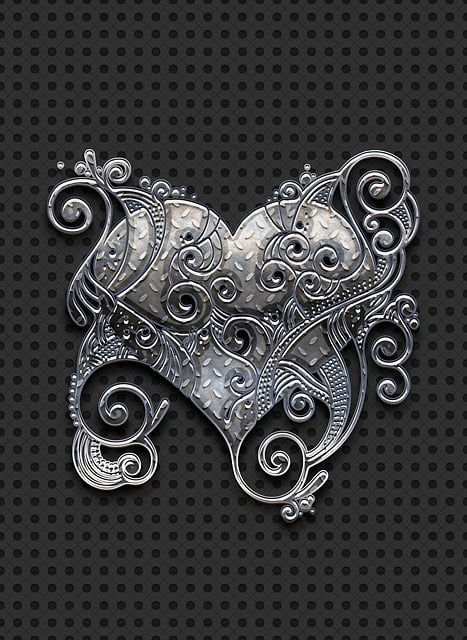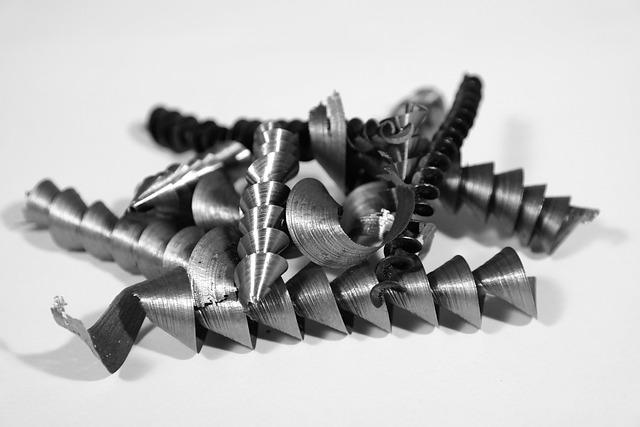Revive & Upgrade: Antique Metal Knobs, Pulls with Vintage Patinas & Custom Designs
Antique-style metal hardware, crafted from durable materials like brass and stainless steel, offers…….
👆 Introduction
Metal hardware serves as the unsung hero of our daily lives, often going unnoticed yet indispensable in maintaining the functionality and safety of various applications. From the hinges on your cabinet doors to the nuts and bolts that hold together the infrastructure of skyscrapers, these components are ubiquitous. This article delves into the intricacies of metal hardware, its historical context, global impact, and the technological advancements driving its evolution. We will explore economic considerations, policy frameworks, and the challenges it faces. Through case studies, we will uncover how metal hardware has shaped industries and what future prospects hold for this dynamic field.
🔥 Understanding Metal Hardware
Metal hardware encompasses a wide range of products used to connect, close, support, or protect other machinery or structures. It includes fasteners like nuts, bolts, screws, and washers; springs; hinges; locks; and brackets. These components are typically forged from iron, steel, aluminum, brass, bronze, or titanium, among other metals. The history of metal hardware dates back to ancient civilizations, with early examples found in Egyptian tombs and Greek amphitheaters.
The significance of metal hardware cannot be overstated; it is integral to industries ranging from construction and automotive to aerospace and electronics. Its role is pivotal in ensuring the safety, efficiency, and longevity of products and structures. As we move forward, understanding the core components and historical context of metal hardware sets the stage for appreciating its evolution and impact on society.
🌍 Global Impact and Trends
The global impact of metal hardware is profound, with its production and consumption shaping economies and influencing innovation. Key trends in this sector include the shift towards sustainable materials, digitalization in manufacturing processes, and the increasing demand for high-strength lightweight alloys. Regions like North America and Europe are at the forefront of technological advancements, while emerging markets such as Asia continue to grow rapidly due to their manufacturing capabilities and rising infrastructure demands.
The global market for metal hardware is influenced by factors such as economic growth, industrial development, and technological progress. Countries with robust manufacturing sectors, like China and Germany, play a significant role in the supply chain, affecting international trade dynamics. Understanding these trends allows businesses and policymakers to anticipate shifts and adapt accordingly.
💲 Economic Considerations
The economic landscape of metal hardware is multifaceted, with market dynamics influenced by supply and demand, raw material prices, and labor costs. Investment patterns in this sector are guided by the potential for innovation, cost reduction, and increased efficiency. Metal hardware is a critical component of various industries, contributing to the overall health of the economy and playing a role in employment and trade statistics.
Economic systems worldwide rely on metal hardware for infrastructure development, automotive production, and consumer goods manufacturing. The sector’s economic impact extends beyond manufacturing, affecting sectors like transportation, energy, and even healthcare, where medical-grade metal hardware is essential.
🔧 Technological Advancements
Advancements in materials science have led to the development of new alloys that are stronger, lighter, and more durable. These innovations have revolutionized the way metal hardware is designed and used. For instance, aerospace-grade aluminum alloys have significantly reduced the weight of airplanes, leading to better fuel efficiency and performance.
In the realm of manufacturing, automation and advanced robotics have streamlined production, reducing costs and increasing output. Additive manufacturing, or 3D printing, is beginning to play a role in creating customized metal hardware components on demand, which could transform the industry’s supply chain. The future potential of these advancements promises even more remarkable applications, from self-healing materials to smart hardware that can adapt to changing conditions.
📜 Policy and Regulation
The governance of metal hardware is shaped by a variety of policies and regulations designed to ensure quality, safety, and environmental sustainability. International standards such as ISO and ASTM set benchmarks for material properties and performance. Trade agreements and tariffs influence the global movement of metal hardware products. Environmental legislation drives the industry towards more sustainable practices, while occupational safety and health regulations govern workplace conditions.
These frameworks are critical in guiding the responsible development and use of metal hardware. They also play a role in protecting consumers and workers, as well as promoting fair competition among manufacturers.
🚫 Challenges and Criticisms
The metal hardware industry faces several challenges, including resource scarcity, environmental concerns, and the need for technological adaptation. Critics often highlight issues such as energy consumption in manufacturing processes, the disposal of hazardous materials, and the potential for supply chain disruptions.
To overcome these challenges, stakeholders must invest in sustainable practices, innovate in material science, and ensure resilience in supply chains. Collaborative efforts between governments, manufacturers, and researchers are essential to address these issues and drive the industry forward responsibly.
📚 Case Studies
The construction of the Burj Khalifa, the tallest building in the world, exemplifies the successful application of metal hardware in high-rise architecture. The aerospace industry’s reliance on titanium alloys for aircraft frames showcases the importance of lightweight yet strong materials. These case studies underscore the lessons learned from integrating metal hardware into complex systems and the critical role it plays in innovation and safety.
🔮 The Future
Looking ahead, the future of metal hardware is intertwined with global economic trends, technological advancements, and environmental sustainability. The industry must navigate these factors while meeting the growing demand for durable and efficient products. The integration of smart technology and the development of new materials promise to revolutionize how we think about and use metal hardware in the coming years.
In conclusion, understanding the multifaceted role of metal hardware in today’s world is crucial for stakeholders across various sectors. From economic implications to technological innovations, from policy frameworks to sustainability challenges, the industry’s future is both promising and complex. As we move forward, the collective efforts of manufacturers, policymakers, and researchers will shape the trajectory of this vital sector.
📈 Market Data
The global metal hardware market size was valued at USD 852.79 billion in 2021 and is expected to expand at a compound annual growth rate (CAGR) of 4.2% from 2022 to 2030, according to a report by Grand View Research. Factors contributing to this growth include the increasing demand for durable goods, infrastructure development in emerging economies, and advancements in materials science.
🌱 Sustainability Focus
The industry is increasingly focusing on sustainability, with manufacturers adopting green practices and sustainable materials to reduce their environmental footprint. The shift towards circular economy principles aims to minimize waste and maximize resource efficiency by designing products for reuse and recycling.
🤝 Global Supply Chain
The global supply chain for metal hardware is complex, involving raw material extraction, processing, manufacturing, distribution, and end-of-life management. Stakeholders must navigate geopolitical risks, trade tensions, and logistical challenges to maintain the flow of goods and services.
Please note that the above content provides an overview of the metal hardware industry with a focus on its multifaceted impact, trends, and future prospects. For specific data or detailed analysis, it is recommended to consult industry reports and market research from authoritative sources.

Antique-style metal hardware, crafted from durable materials like brass and stainless steel, offers…….

Selecting the right metal hardware, including custom knobs and pulls, is crucial for merging aesthet…….

In heavy-duty applications like doors, gates, cabinets, and furniture, high-performance metal hardwa…….

Metal hardware, including custom metal knobs, pulls, and hinges, enhances both the longevity and aes…….

The integration of lighting into metal hardware is a significant trend in modern interior design. Cu…….

Custom metal hardware, including knobs, pulls, and hinges, transforms ordinary furniture into extrao…….

Custom metal hardware, including knobs, pulls, and hinges, is a powerful tool for transforming inter…….

Custom metal hardware, from sleek stainless steel to timeless brass, is revolutionizing furniture de…….

Custom metal hardware, including knobs, pulls, and hinges, is a captivating way to personalize and e…….

Metal hardware, particularly custom options like metal knobs, pulls, and hinges, is a key element in…….